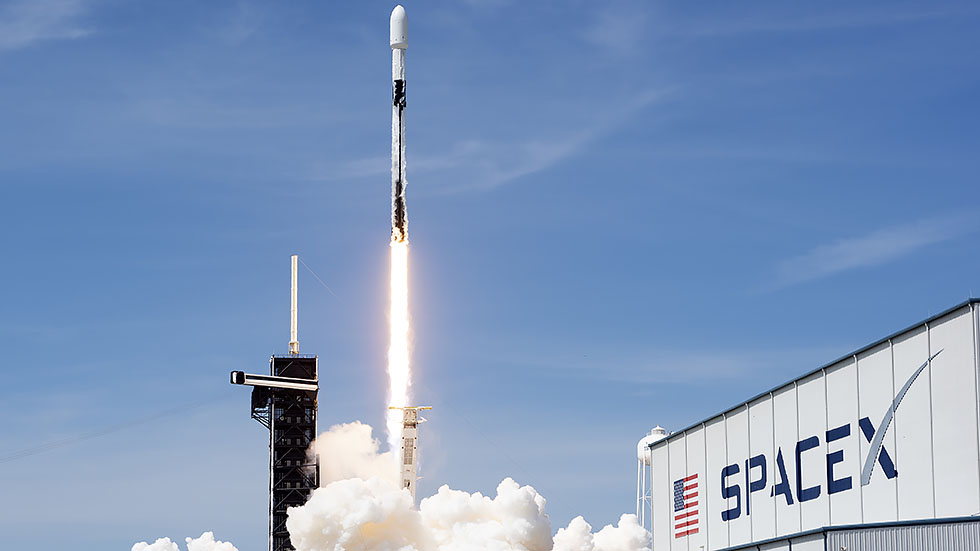Elon Musk, the billionaire and creator of SpaceX, will provide an update on Starship, a powerful rocket that some predict may alter the space business in ways that many can not yet comprehend, on Thursday night at a launch site in Boca Chica, Texas. And that lack of creativity might be a concern for others in the sector.
During Musk’s address, the rocket will be on display at SpaceX’s test site, Starbase. Starship stands just under 400 feet (120 meters) tall atop its massive rocket, dubbed Super Heavy.
This makes it taller than the Saturn V, a 363-foot-tall NASA rocket that was utilized for the Apollo lunar missions in the 1960s and 1970s and is now the world’s tallest operational rocket.
The starship will be totally reusable and capable of transporting over 100 tonnes to Mars and the Moon.
In the Starship user handbook, SpaceX notes, “Fully reusable Starship and Super Heavy systems are projected to enable for space-based operations that have not been conceivable previously.”
The launch of a starship would be a significant step toward SpaceX’s aim of bringing life to other planets. The rocket’s large cargo capacity, along with its reusability, might dramatically alter the economics of sending people and objects into space.
Crashing and explosions
The project gained a huge boost last year when NASA awarded it a $2.9 billion (€2.5 billion) contract to send people to the moon. After ferrying NASA astronauts to the International Space Station on Falcon 9, the world’s first orbital-class, reusable rocket, SpaceX became the first commercial company to send humans into space in 2020.
The Starship update on Thursday will be the first substantial news in over two years. The rocket was supposed to perform its maiden orbital test flight in January or February of this year, but the US Federal Aviation Administration postponed it due to an environmental review.
It was not the first time the project had been pushed back.
“This is going to sound really insane, but I believe we want to attempt to achieve orbit in less than six months,” Musk stated in a 2019 Starship update.
He was partially correct: the aim was unattainable. Starship prototypes have been destroyed in violent crashes and explosions during the last two years, but the orbital flight has remained a pipe dream.
To add insult to injury, a solar storm over the weekend damaged hundreds of satellites launched only last week by SpaceX and intended to be part of the Starlink internet communications network.
An interplanetary elevator
Musk has a reputation for setting excessively ambitious schedules, which might explain why much of the space industry is not yet ready for the reality of a fully working Starship and everything that it would entail.
In an email to DW, Casey Handmer, physicist and founder of the carbon capture startup Terraform Industries, who blogs regularly about advances in space travel, said, “A fully functional Starship would so thoroughly render all legacy launch systems obsolete that it may as well be that they had never even existed.”
Handmer argues on his blog that a starship may “allow a conveyor belt logistical capacity to low Earth orbit.” Those that are best positioned to take advantage of this big change in capability will succeed, while the others will go away quickly, he said.
The financial team seemed to be in agreement. In a letter, Morgan Stanley Equity Analyst Adam Jonas used another metaphor: “We conceive of reusable rockets as an elevator to low Earth orbit.”
“Just as more innovation in elevator building was necessary before today’s skyscrapers could dot the skyline, space prospects will grow as access and launch costs decline.”
Investors aim for the stars
According to Morgan Stanley, the global space business might produce more than $1 trillion in income by 2040, up from $350 billion now. Much of this is anticipated to come through satellite broadband internet connectivity, which is part of the so-called space-to-Earth economy, in the near and medium future.
However, according to McKinsey, investment in “lunar and beyond” initiatives has been continuously growing. According to a January report, such projects were attracting between 10% and 15% of all private investment in space-related enterprises, or around $1 billion. This is an increase from less than 5% a decade earlier. This economic transition would be aided greatly by a rocket-like Starship.
So far, there is not much that compares to Starship and its SpaceX forerunners. As aerospace giant Boeing struggled to fix concerns with its own Starliner spaceship, the firm was given three extra NASA trips in December.
Both firms have agreed to ferry NASA astronauts to the International Space Station under contracts inked with the space agency.
ArianeGroup, a European space corporation, is attempting to catch up. The Maa launch system, which will be built to be reusable, is set to enter the satellite launch market in 2026.
It will, however, be dwarfed by Starship in terms of scale, launching just 1 metric tonne to low Earth orbit in reusable mode, compared to Starship’s projected 100.
It was dubbed “our Falcon 9” by French Finance Minister Bruno Le Maire, who compared it to a SpaceX product that would be obsolete by 2026 if Musk’s ambitions materialized.
In October, Fatih Ozmen, co-founder of Sierra Nevada Corp., a privately owned American aerospace corporation, told the Financial Times, “If you are not cautious, SpaceX will be the only game in town.”
This is a lot of hype for a rocket that has yet to make an orbital test flight. And if Musk’s electric and self-driving vehicle startup, Tesla, has taught us anything, it is that big initiatives take time. Musk and his team, on the other hand, are not in the mood to wait.
“At Boca Chica, SpaceX has a crew of highly talented, dedicated, and competent engineers and technicians working 24 hours a day to build this future,” Handmer added. “They have a lot of resources and are behaving as though they expect to win.”

